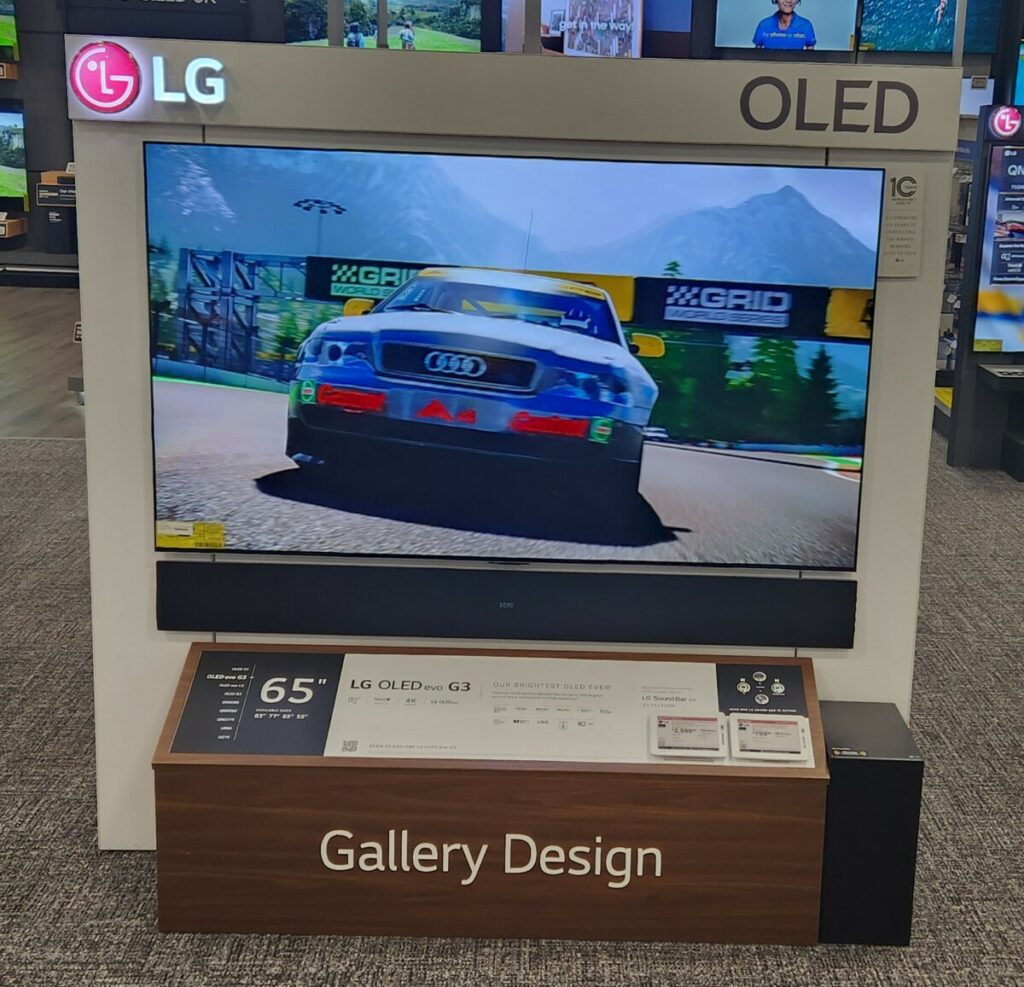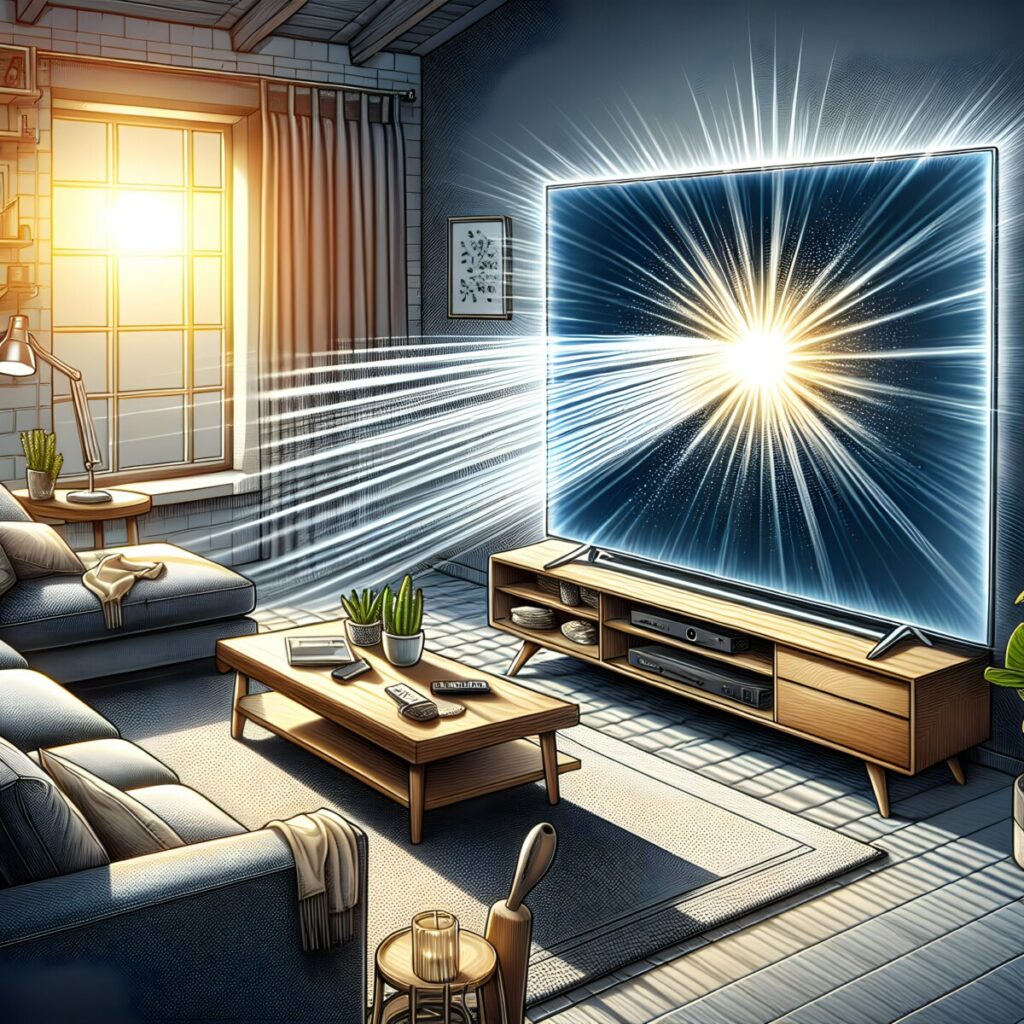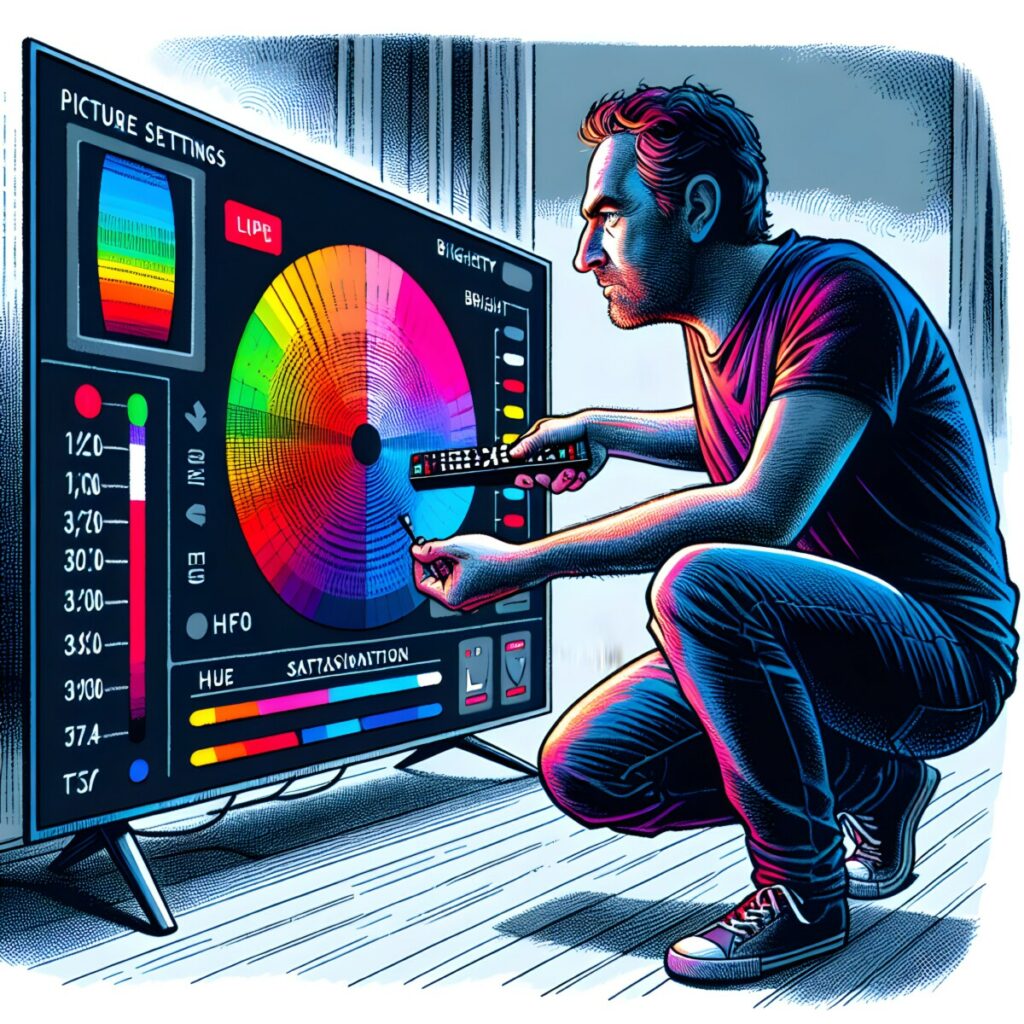As an Amazon Associate I earn from qualifying purchases
When choosing the perfect spot for your OLED TV, you might wonder if exposure to direct sunlight is something to worry about.
In fact, the organic compounds in OLED displays are susceptible to damage from prolonged exposure to direct sunlight.
This is because the UV rays and increased heat can negatively impact the screen, potentially leading to issues like image retention or burn-in, and can even shorten the display’s overall lifespan.
Unlike traditional LED TVs, OLED screens use organic materials that emit light when an electric current passes through them, which unfortunately makes them more vulnerable to UV light and heat.
Additionally, the intense light from the sun can make it harder to view the screen properly due to glare, further jeopardizing your viewing experience.
To keep your OLED TV in top condition, it’s crucial to position it away from direct sunlight or windows.
Not only will this practice preserve the lifespan and picture quality of the display, but it will also enhance your viewing pleasure by preventing the adverse effects of sunlight exposure.
You can also invest in curtains or TV covers to protect your TV from sunlight, I go into more in detail regarding this later in this article if you want to skip ahead.
Remember, the longevity of your television also hinges on how you care for it—placement is just one part of the equation.
Understanding OLED Technology and Sunlight Exposure

When you purchase an OLED TV, you’re investing in a display technology that offers superior contrast and deep black levels thanks to its organic compounds.
However, this advanced technology does come with considerations regarding sunlight exposure.
The Science Behind OLED TVs
OLED stands for Organic Light-Emitting Diode.
Unlike traditional LCDs, which require a backlight, each pixel in an OLED screen emits its own light when an electric current is passed through.
These organic compounds are what allow for the rich colors and deep blacks.
However, organic compounds can be sensitive to UV light which is a component of direct sunlight.
Prolonged exposure to sunlight can degrade these organic materials more rapidly, potentially affecting the longevity of your TV’s display qualities.
OLED vs QLED: Susceptibility to Sun Damage
OLED and QLED TVs differ primarily in their makeup.
QLED, or Quantum Dot LED TVs, use a metallic quantum dot filter in conjunction with an LED backlight.
This gives them a bit more resilience against sunlight damage compared to OLEDs, they also have a longer lifespan.
If your OLED TV is exposed to direct sunlight over time, there is a risk of damage, as the UV rays can cause the organic elements to deteriorate, leading to issues such as image retention or burn-in.
On the other hand, QLED screens are somewhat less prone to these issues but are not entirely immune to the effects of UV light and heat.
Effects of Direct Sunlight on OLED TVs

Your OLED TV provides sharp images and vibrant colors, but its advanced display can be compromised by direct sunlight.
This exposure affects not only the visibility but also the durability of the technology.
Risk of Permanent Damage
Direct sunlight emits ultraviolet (UV) rays that can permanently damage your OLED TV by accelerating the degradation of organic compounds in the display.
Prolonged exposure to UV rays and the accompanying heat might result in a decrease in picture quality or lead to the total failure of your OLED TV Exploring The Risks Of Sun Damage On OLED Displays.
Image Retention and Burn-in Phenomena
One of the most common issues associated with sunlight on OLED TVs is image retention and burn-in, where static images seemingly get “stuck” on the screen.
Continuous exposure to direct sunlight exacerbates this, creating persistent and possibly irreversible image anomalies.
Preventive Measures to Protect Your OLED TV

To ensure the longevity and peak performance of your OLED TV, consider implementing protective measures against potential sunlight damage.
Proactive steps can significantly reduce the risk of long-term harm due to environmental light exposure.
Ideal Placement and Lighting Conditions
When setting up your OLED TV, choose a location that minimizes exposure to direct sunlight.
This can involve positioning the TV in a part of the room where sunlight does not directly hit the screen.
If possible, orient the TV away from windows, or place it in an area where daylight is naturally diffused.
Maintaining moderate brightness levels can also help in reducing the strain on the panel, making it less susceptible to the adverse effects of bright environmental light.
Use of Blinds and TV Covers
To further protect your screen from sunlight, consider the use of blinds and blackout curtains (affiliate link) on windows to control the amount of natural light entering the room.
During times when sunlight is most intense, close the blinds to shield your TV.
For additional protection, especially when the TV is not in use, invest in a quality TV cover (affiliate link).
A well-designed cover not only safeguards against dust and scratches but also helps block out damaging UV rays that can contribute to the degradation of your TV’s display over time.
What you need: Blackout Curtains and TV Cover
Absolute Zero Blackout Window Curtains
- ABSOLUTE ZERO - These elegant panels come in several sharp looking shades and are certified to block 100% of incoming light to maximize privacy. Perfect for any living room, bedroom, kids room or nursey window.
- PERFECT SET - Each individual panel measures 37" wide and 84" long. 2 panels per pack.
- NOISE REDUCTION - Kylie Absolute Zero is designed to provide noise-reducing benefits, further increasing your privacy
- COMPATIBILITY: Specially made for 55" TVs for a perfectly snug fit
- SMART MATERIAL: Made of durable non-woven fabric that is flexible and tear resistant
- PROTECTIVE: The flexible fabric cover helps protect your television from dust, scratches & fingerprints
- BACK ACCESS: The back of the TV remains uncovered so you still access all important ports and wires
- PLEASE NOTE: The protective TV screen cover is recommended for indoor use only
Optimizing OLED TV Settings and Maintenance

Properly configuring your OLED TV settings can ensure a longer lifespan for your screen, while routine care and maintenance preserve the quality and performance of your OLED TV.
Adjusting Picture Settings for Longevity
To prolong your OLED TV’s lifetime, adjust the brightness settings to a moderate level; excessive brightness over long periods can cause premature wear.
The optimal picture quality (PQ) settings minimize the risk of image retention and burn-in.
Keep contrast levels high enough for deep blacks without overtaxing the screen.
Many OLED TVs offer an automatic brightness limiter (ABL) which adjusts the luminance of the screen depending on the content being displayed.
This feature can help manage the quantity of nits (a measure of brightness), reducing stress on your OLED screen.
Routine Care and Maintenance Tips
Maintaining ambient temperature: Your OLED TV thrives in a stable, cool environment.
Avoid placing your TV where it will be exposed to direct sunlight or heat sources, as extreme temperature fluctuations can compromise the screen quality.
- Regular cleaning: Gently wipe the OLED screen with a soft, dry microfiber cloth (affiliate link) to remove dust and fingerprints.
- Software updates: Ensure your TV’s firmware is current, as updates can enhance performance and efficiency.
By following these guidelines for both settings adjustments and physical maintenance, you’ll be able to enjoy your OLED TV for many years to come without compromising on the stellar viewing experience these screens are known for.
Enhancing Viewing Experience and Minimizing Risks
To ensure the longevity of your OLED TV and maintain an optimal viewing experience, it’s crucial to consider both environmental factors and suitable accessories.
Taking these steps can protect your device from sun damage while enhancing peak brightness and clarity.
Selecting Appropriate Accessories
- Anti-Glare Screen Protectors: An effective way to combat glare and reflections from direct sunlight is by applying an anti-glare screen protector to your OLED TV. This can help maintain clear visibility without compromising on the display’s quality.
- TV Mounts and Stands with Swivel Function: Using a mount or stand that swivels allows you to adjust the angle of your TV, optimizing wide viewing angles and reducing direct exposure to sunlight.
Understanding the Importance of Ventilation
- Proper Placement: Ensure your OLED TV is in a location where it is not directly exposed to sunlight, which can lead to heat build-up and potentially affect the screen’s brightness levels over time.
- Adequate Airflow: Keep enough space around your OLED TV for proper ventilation. This is not only crucial for maintaining your TV’s internal temperature but also for minimizing the risks associated with prolonged sun exposure, especially if your device is used as a PC monitor with extended on times.




